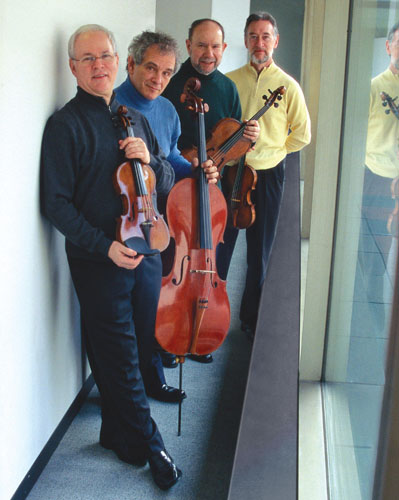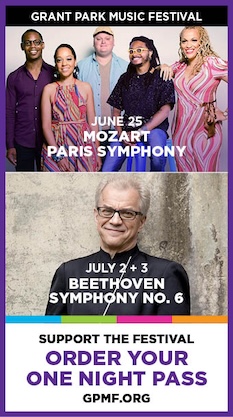Haydn’s “Sun” quartets also rise, taking the genre with it

Joseph Haydn’s string quartets are not exactly terra incognita, and he remains secure as the preferred lead-off composer for chamber programs, even edging out his young friend, Mozart. Still, with more than sixty quartets to mine, most ensembles tend to focus on a relative handful of late works, leaving the lion’s share of Haydn’s quartets in the shadows.
Kudos then to the Juilliard String Quartet for marking the 200th anniversary of Haydn’s death with a unique program of four of his seminal Op. 20 quartets Monday night at the Ravinia Festival’s Martin Theatre.
While Haydn’s later works would become even more daring, Op. 20—nicknamed the “Sun” quartets due to the original published score’s cover illustration—paved the way for Beethoven and Schubert to expand the quartet to unprecedented heights. The six works capture a crucial historical moment when Haydn, as he did with the symphony, was pushing the boundaries of what was regarded previously as a genteel, quasi-Tafelmusik form.
Rather than the previous galant style there are jarring modulations with sudden and frequent shifts into the minor, the cello achieves a new prominence, and the fugal closing movements are envelope-pushing in their keys and structure.
The Juilliard players—violinists Joel Smirnoff and Ronald Copes, violist Samuel Rhodes and cellist Joel Krosnick—remain a closely knit ensemble, well blended and elegant yet lively and vigorous, sensitive to the music’s burgeoning expressive elements without verging outside of period style.
Of the works heard on the first half, Smirnoff was primus inter pares, with the first violin often highlighted. In the Quartet in F minor (No. 5), the minuet was given an aggressive rustic snap, which was a fine foil to the refined yet quirky Adagio, Smirnoff’s solo descants nicely done. The minor-key fugal finale still sounds bracingly modern today in its jarring insistence.
Likewise in the Quartet No. 4 in D major, the Juilliard players had the measure of the gracious lyricism as well as the contrapuntal vigor, with Krosnick’s warm, burnished tone a pleasure in the slow movement’s extended cello solo.
Haydn’s peculiar mix of grace and subversive humor was more strikingly displayed after intermission with the Quartets Nos. 3 and 2. These works received equally committed if somewhat less polished readings with fitful moments of wayward intonation. Still, the Juilliard members underlined Haydn’t ingenuity in the Quartet in G minor (No. 3) as with the minuet’s abrupt brake-slam in mid-phrase, and the warmly expressive outpouring of the Adagio.
The Quartet No. 2 in C major rounded off the evening, with the musicians lending an apt poise to the Rococo opening theme, more fallible violin intonation apart. The Juilliard members also plumbed a surprising degree of desolation in this compelling work, while bringing the requisite verve to the gamboling four-part final fugue.
The Juilliard Quartet will return to the Ravinia Festival July 8 to perform, Schubert’s Rosamunde Quartet, Bartok’s String Quartet No. 2, and Beethoven’s String Quartet in F major, Op. 135. www.ravinia.org; 847-266-5100.
Posted in Performances

